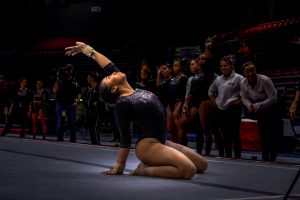NIU soil judging team qualifies for national competition
October 14, 2008
NIU qualified for the American Society of Agronomy Soil Judging National Contest in Missouri in spring 2009 after a recent competition.
According to the Penn State soil judging Web site, soil judging consists of going into a pit, which is dug with a backhoe, and competitors look at the “type, color, depth, consistence, clay percentage, shape, structure, grade of structure and redoximorphic features.”
“Basically, we look at the soil, and we try to determine what type of soil it is through various techniques and how it’s made up,” said team member Ian Kenney, a senior geography major.
Judging the soil can be difficult because the soil changes depending on the region. The team will have plenty of preparing to do for the national competition.
“We will begin studying the soils of the contest area using published soil and geologic maps of the area,” said Michael Konen, coach of the NIU team and associate professor of geography. “Over the winter the team will practice describing northern Illinois soils in the lab. We will meet weekly in the spring to go over soils in the contest area more closely.”
The team qualified for the competition by taking third place in the Region 3 soil competition.
This competition was held near Tomahawk, Wis. and hosted by the University of Wisconsin-Stevens Point. NIU competed against five teams: the University of Wisconsin-Stevens Point, the University of Wisconsin-Platteville, University of Illinois in Champaign, Illinois State University and Purdue University.
“This was only NIU’s second time in the contest and the students performed very well,” Konen said. “There were about 50 students participating.”
Andrea Rasmussen, a senior geology major, took fourth place overall for NIU out of every individual participant.
“I was excited that I did that well,” Rasmussen said. “[but] I was mad because I could’ve gotten third.”
Since the soil varies by region, the NIU team had to learn the ins and outs before the contest.
“This year we had to learn a whole other set of rules,” said participant Alicia Lisowski, a senior geography major. “[A week before the contest] we had to cram 52 pages into memory.”






